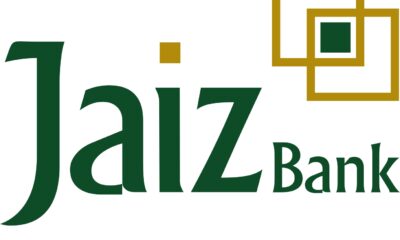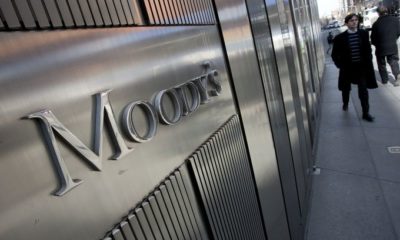- Chinese Bank Mulls Buying African Infrastructure Debts
African governments could get access to more Chinese debt if a plan by a leading Chinese banking conglomerate to buy African infrastructure debts from the government succeeds.
The plan to buy the debts would start next year, repackage them into securities and then sell them to investors.
However, the new proposal could prove to be a poisoned chalice as it could mire African countries in more debt.
However, for Chinese financiers, developers and multilateral development financial institutions, this will offer further opportunities to make money from the continent.
The plan will see Hong Kong mortgage insurer Hong Kong Mortgage Corporation (HKMC) buy a diverse basket of infrastructure loans next year and explore the idea of “securitising” or repackaging them into securities for sale to investors, allowing it extra liquidity that it can loan out to finance more infrastructure projects.
“This initiative we believe will help ‘recycle’ commercial banks’ capital to be redeployed into other greenfield infrastructure projects, besides enabling wider capital markets participation in infrastructure development under the Road and Belt initiative,” said HKMC Greater China chief executive Helen Wong.
The thinking behind this, according to the country’s Monetary Authority, is to use Hong Kong’s recently set up Infrastructure Financing Facilitation Office to enhance the capacity of the investing and recipient countries in infrastructure financing and facilitate infrastructure investment and financing flows.
“I am happy that the HKMC is now considering a new line of business of buying infrastructure loans for the purpose of securitisation. This is because new capital standards for banks do not make it attractive for them to hold on to these loans on a long-term basis, even though the projects at the brownfield stage are operating smoothly.
“I can see a good opportunity for banks to offload their loans to these long-term investors,” Norman Chan, chief executive of the Hong Kong Monetary Authority, said last week, adding that there are currently many investors, including insurance and pension funds, looking for less risky investments that can produce steady long-term cash flows.
The plan, which is still being developed, will see more than 90 firms including project developers or operators, commercial and investment banks, multilateral development financial institutions, asset owners and managers and professional service firms from Hong Kong, mainland China and overseas joining as partners.
Some of these firms already have current projects and infrastructure loans in the region, which puts the region’s debts into the basket set for “securitisation.”
The move will be a boon for infrastructure financiers as it will release illiquid assets back into the market, offering fresh capital injections for newer projects, which could allow for more funding opportunities for regional countries.
Latest data from the China-Africa Research Initiative at Johns Hopkins University shows regional economies owed China and its institutions more than $29.42 billion as at April this year in infrastructure loans, which have been tapped over the past 10 years to build transport, communication, manufacturing and energy sectors.
The data shows that Ethiopia leads the region with a $13.73 billion debt to Beijing, followed by Kenya at $9.8 billion.
Uganda owes $2.96 billion; Tanzania owes $2.34 billion. Rwanda, Burundi and South Sudan owe $289 million, $99 million and $182 million respectively.
This new development comes at a time when China’s main project insurer, China Export and Credit Insurance Corporation, known as Sinosure, cast doubt on the viability of some infrastructure projects. The firm has already incurred losses of more than $1 billion on the Ethiopian-Djibouti railway alone.
Last week, Wang Wen, the chief economist for Sinosure, said that the planning behind many of China’s major infrastructure projects abroad has been “downright inadequate,” leading to huge financial losses.
“Chinese developers and financiers of projects in developing nations need to step up their risk management to avoid disaster. We can see the mistakes of the Addis-Djibouti Railway line, which has cost Sinosure a $1 billion loss,” said Mr Wang.
The $4 billion Addis Ababa-Djibouti freight railway, which was inaugurated at the start of this year, saw Ethiopia seek to restructure its debt in September by extending the repayment terms, following its underuse as a result of power shortages.
“Ethiopia’s planning capabilities are lacking, but even with the help of Sinosure and the lending Chinese bank, it was still insufficient,” Mr Wang said at a Belt-and-Road infrastructure financing forum in Hong Kong.
The plan to securitise and sell the Chinese debt to investors comes at a time when many African nations are seeking to either restructure their debts with Beijing or get friendlier terms, with more grant packages as they face a rising debt dilemma.
In September, Addis announced that China had agreed to restructure some of its loans, including a loan for a $4 billion railway linking its capital Addis to neighbouring Djibouti.
Ethiopian Prime Minister Abiy Ahmed said their loans will be restructured, with a further 20-year extension, which will see its annual repayments reduced to an affordable level.
“In our conversation with our Chinese partners, we had the opportunity to enact limited restructuring of some of our loans. In particular, the loan for the Addis Ababa-Djibouti railway, which was meant to be paid over 10 years, has now been extended to 30 years. Its maturity period has also been extended,” PM Abiy said.
Nairobi, which has been ramping up the freight numbers for its SGR line between Nairobi and Mombasa, was also on record as asking for a 50 per cent grant on its $3.8 billion third phase of railway construction between Naivasha and Kisumu.
The first phase of the project, which cost $3.2 billion, was financed by the China Exim Bank, with a concessional loan of $1.6 billion with a 20-year life, a grace period of seven years and an annual interest rate of two per cent.
The concessional loan, on the other hand, was for 10 years, with a grace period of five years; an insurance cover of 6.93 per cent and an interest of a six-month average of the London Inter-bank Offered Rate plus 3.86 per cent.
This loan also had a grant element of 35 per cent and the first repayments are due next year. If the railway doesn’t break even by then, Kenyan taxpayers will have to foot that bill, realising Sinosure’s fears, given that it offered insurance for this loan.
In July, Kenya’s Transport Cabinet Secretary James Macharia told a parliamentary committee that the SGR operator had made a loss of $110 million in its first year of operations.
“On average, the line made a monthly loss of $7.5 million in the 2017/2018 financial year largely as a result of low cargo business. However, we now project that it will turn around and make a profit of $50 million by June next year, averaging $4.2 million profit monthly as we ramp up cargo volumes,” Mr Macharia said.
However, according to the Kenya Ports Authority (KPA), the SGR cargo haulage has raked in more than $16.2 million in the past nine months, at $1.8 million a month, as the train’s daily tonnage capacity moved above 800 containers, out of the 1,700 containers that arrive at the Port of Mombasa.
“Since the start of SGR cargo freight operations in January, a total of $16.2 million has been billed, collected and remitted to the SGR escrow account, which is under the custody of Kenya Railways,” KPA managing director Daniel Manduku said. (The East African)


 Billionaire Watch3 weeks ago
Billionaire Watch3 weeks ago
 Startups4 weeks ago
Startups4 weeks ago
 News4 weeks ago
News4 weeks ago
 News4 weeks ago
News4 weeks ago
 Bitcoin4 weeks ago
Bitcoin4 weeks ago
 Naira4 weeks ago
Naira4 weeks ago
 Forex3 weeks ago
Forex3 weeks ago
 Treasury Bills4 weeks ago
Treasury Bills4 weeks ago
























